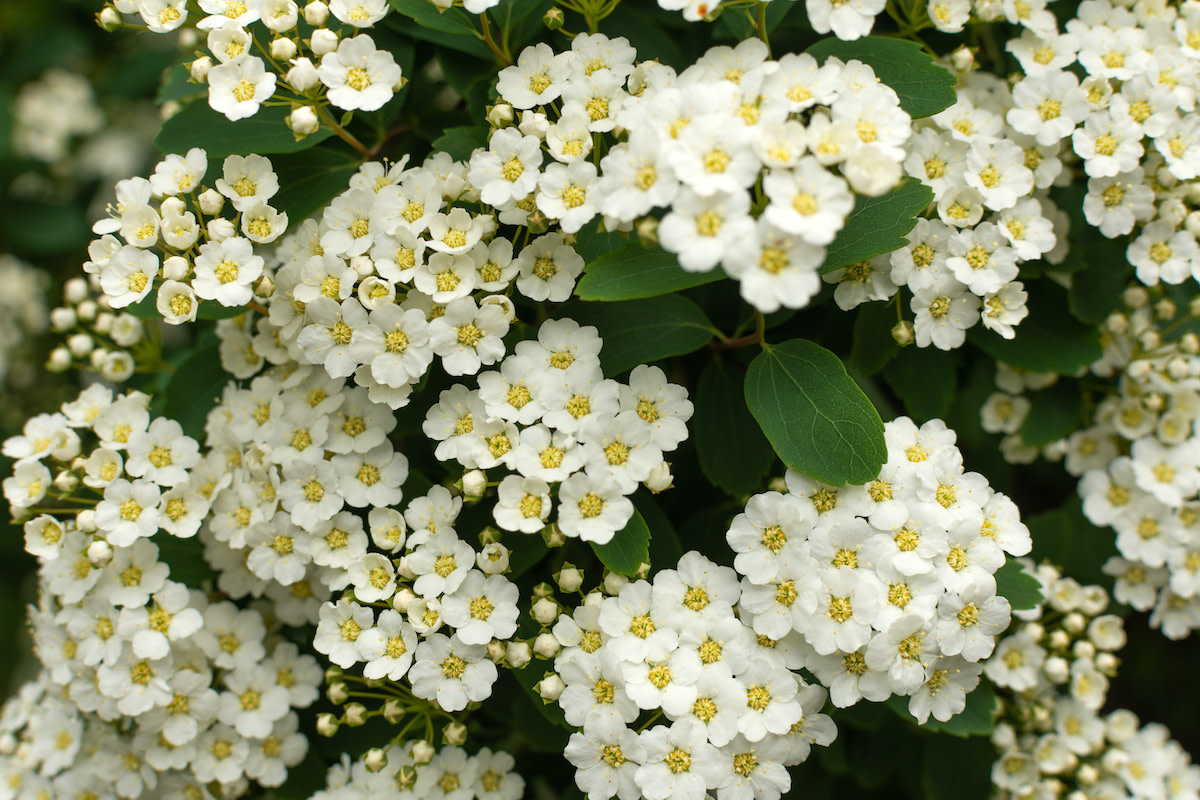Spirea Bush Care: 4 Types of Spirea
Written by MasterClass
Last updated: Jan 3, 2022 • 3 min read
Spirea is a popular plant that provides home gardens with color and cover. Learn about the many varieties of spirea and how to care for them.
Learn From the Best
What Is a Spirea Bush?
A spirea bush, sometimes spelled “spiraea,” is a hardy flowering shrub in the Rosaceae, or rose, family. These low-maintenance, drought-tolerant plants are fast growers and offer versatility to various landscapes. Spirea shrubs work well as groundcovers, shrub borders, and mass plantings, making them a popular choice for home gardens.
There are eight to one hundred species of spirea plants, but all fall into one of two categories: spring-blooming spirea and summer-blooming spirea. Spring bloomers typically produce large white flowers on arching branches in May or June, while summer bloomers grow white, red, or pink flowers on straight branches in July and August. All spirea bushes are deciduous shrubs, which means they shed their leaves yearly.
Spirea grow anywhere from one to eight feet in height, depending on the variety or cultivar, and up to six feet in width. Full sun conditions and well-drained soil produce the best foliage color and flower color, though they also grow in partial shade. Most varieties grow best in USDA Hardiness Zones 4–8, though certain cultivars tolerate higher heat or lower temperatures.
Is Spirea Invasive?
Some states regard varieties like Japanese spirea (Spiraea japonica) as invasive due to their fast growth rates, so check with local garden stores before planting. There are also seedless, non-invasive spireas, like the Double Play Doozie.
4 Spirea Varieties
There are many varieties of spirea. Among them are:
- 1. Birchleaf spirea: The birchleaf spirea (Spiraea betulifolia) is a white, summer-blooming shrub that reaches three to four feet in height. Its flowers appear in early summer to midsummer, but its most spectacular colors come in autumn. Its dark green leaves, which resemble birch leaves, turn an array of fall colors, including red and orange.
- 2. Bridal wreath spirea: The white double flowers that appear on this deciduous shrub’s growth habit in early spring give the bridal wreath spirea (Spiraea prunifolia) its name. It’s one of the largest types of spirea, reaching a height between four and eight feet and a width between six and eight feet. You may see other varieties of spirea, like the Vanhoutte spirea (Spiraea vanhouttei), listed as bridal wreath spirea in catalogs.
- 3. Early spirea: One of the first spirea to bloom each year, the early spirea (Spiraea thunbergii) produces white spring flowers with a unique umbrella shape. Its green foliage turns yellow-green in the fall.
- 4. Japanese spirea: Regarded as invasive in certain areas, the Japanese spirea has a diverse array of flower colors and sizes. Certain cultivars produce different colored flowers in late spring or early summer. The ‘Goldflame’ displays pink blooms and the ‘Anthony Waterer’ blooms red flowers, while other cultivars’ new growth ranges from lavender-pink to purple flowers. New growth also generates dazzling colors, from dark green to chartreuse and bright yellow foliage. Sizes vary from dwarf types like the ‘Little Princess’ to shrubs that reach five or more feet in height.
How to Care for Spirea
There are many ways to care for spirea. Some DIY tips include:
- 1. Planting: Plant your spirea in the spring or fall, and choose an area with well-drained soil that gets at least six hours of sun per day. Dig a hole that’s twice the size of the plant’s container before removing it. Loosen some of the tighter roots from the root ball, place it in the hole, and fill the hole with soil. Water the soil and cover it with a two- to three-inch layer of mulch.
- 2. Caring: Spirea are low-maintenance plants. Water its soil regularly throughout the summer. Cut summer bloomers in the late winter or spring, and trim spring bloomers and any canes it produces as soon as the flowers drop off in the late summer. Add control-release fertilizer in the early spring to keep the plant fed throughout its growing season.
- 3. Pests: Since spirea are in the rose family, they also fall prey to the same pests, like aphids. However, infestations are rare. They are also susceptible to several diseases, including root rot and fungi like powdery mildew.
Learn More
Grow your own garden with Ron Finley, the self-described "Gangster Gardener." Get the MasterClass Annual Membership and learn how to cultivate fresh herbs and vegetables, keep your house plants alive, and use compost to make your community—and the world—a better place.
